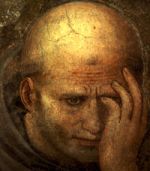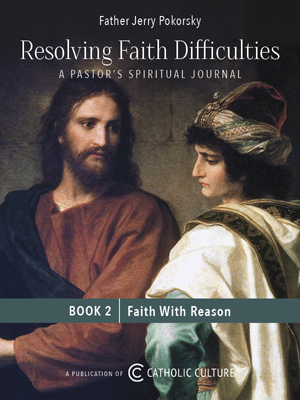Doom deferred?
By Diogenes ( articles ) | Nov 12, 2005
While I think the holes in the Holy See's new screen door are big enough for the entire Joffrey Ballet to dance through, I was pleased to see Phil quoted in today's New York Times, giving a more upbeat take on the (presumptive) Instruction:
But several experts, some who support and some who oppose the new rules and who spoke cautiously because they had not seen the final document, said that as described by the newspaper, it appeared to make it harder even for celibate men who identified themselves as gay to become priests.
"In principle, I think, the document seeks to establish that men shouldn't become priests if their homosexual identity is clear -- to themselves or to others," Philip F. Lawler, editor of a conservative Catholic Web site, Catholic World News, wrote by e-mail in response to questions.
Odd that the NYT's Ian "need some quote from supporter" Fisher didn't let us hear from the loyal opposition this time around.
 It'll be interesting to see how the various players choose to react -- publicly -- to the Instruction. My hunch is that we'll see a two-tiered approach: from America and Commonweal, I'd expect relatively low-volume critiques lamenting the Holy See's dependence on outdated social science (both journals have a macro in their word-processors that adds this lament at a touch), combined with mock astonishment that here, for the first time, the Church has acknowledged that there is no inherent conflict between homosexual appetites and priesthood, whence the Church, having changed her mind on the major point, can be expected to get with it eventually and change her mind on the peripheral stuff, such as lifestyle. They'll help spawn the "Church Does U-Turn on Gays" headlines in the popular press. On the part of more radical journals, my guess is the focus will be hostility to the exclusion of gay culture and to the notion that transitory homosexual desires are preferable to deep-seated ones. The suggestion that the former may result from unresolved adolescent issues (dell'adolescenza non ancora compiuta) will probably come in for a lot of garment-rending. In brief, the rads will continue to insist the Church is wicked, while America and company will argue that she's a good girl at heart, just a tad slow. Andrew Sullivan, no enemy to self-contradiction, will contend that both are true.
It'll be interesting to see how the various players choose to react -- publicly -- to the Instruction. My hunch is that we'll see a two-tiered approach: from America and Commonweal, I'd expect relatively low-volume critiques lamenting the Holy See's dependence on outdated social science (both journals have a macro in their word-processors that adds this lament at a touch), combined with mock astonishment that here, for the first time, the Church has acknowledged that there is no inherent conflict between homosexual appetites and priesthood, whence the Church, having changed her mind on the major point, can be expected to get with it eventually and change her mind on the peripheral stuff, such as lifestyle. They'll help spawn the "Church Does U-Turn on Gays" headlines in the popular press. On the part of more radical journals, my guess is the focus will be hostility to the exclusion of gay culture and to the notion that transitory homosexual desires are preferable to deep-seated ones. The suggestion that the former may result from unresolved adolescent issues (dell'adolescenza non ancora compiuta) will probably come in for a lot of garment-rending. In brief, the rads will continue to insist the Church is wicked, while America and company will argue that she's a good girl at heart, just a tad slow. Andrew Sullivan, no enemy to self-contradiction, will contend that both are true.
But editorial spin, though telling as an indicator of the battle lines, is still secondary. The key is the folks who have the authority to apply the norms concretely. The greater the level of conflict between bishops and between religious superiors, the better the chance that the document will make a difference for good; if they emerge from meetings red-faced and muttering and refusing to give interviews, we'll know that some action is afoot. If the USCCB and the CMSM issue drowsy statements of gratitude and agreement, we'll know we're in for business as usual. I very much hope I'm wrong in surmising that the latter is more likely. It would be great if the men charged with implementing the Instruction asked, "how do we use this doc to act in accordance with the mind of the Church?" instead of, "how do we get around this thing to keep doing what we've always done?" The Menlo Park Mardi Gras, 2006, will indicate how much crow I need to eat. Here's hoping for a short Lent.
All comments are moderated. To lighten our editing burden, only current donors are allowed to Sound Off. If you are a current donor, log in to see the comment form; otherwise please support our work, and Sound Off!







